Case Study: Customer Journey Map With Operating Principles
A proven way to boost teamwork and better serve your customers with operating principles
Hey, Paweł here. Welcome to the free edition of The Product Compass.
For this Substack, I’ve teamed up with
, an experienced product manager. She writes a weekly newsletter on product management for busy people.I was inspired by our conversation, where Amy suggested combining a customer journey map with product operating principles based on her on-the-job challenges.
Her approach resonated with me. Hope you will enjoy it just as much as I did.
Are you using your customer journey map in product development? If you only leverage it when discussing new features, you’re missing out.
Did you know you can integrate the customer journey into your daily product operations to improve collaboration and better serve your customers?
Let’s follow a case study of a product team that wants to integrate their customer journey into daily work.
In this post:
Case Study Background
Case Study: Integrating Customer Journey Maps with Operating Principles
Operating Principles: Putting the Pieces Together
Conclusion: Moving Beyond Check-the-Box Customer Journeys
1. Case Study Background
A company providing disaster recovery software-as-a-service (SaaS) is experiencing slower-than-expected growth. Early customers have faced multiple challenges in activating and scaling the service, leading to extensive internal discussions about accountability.
Different departments—Sales, Customer Success Managers (CSMs), Engineering, Finance, and Product Management—each have their views on the root causes of these issues.
Overall, customers are happy with the service but are mainly concerned about slow response times to their requests.
The challenge for the product team
The growth of the SaaS product is slowing down, leading the product team to adjust their operating principles. Although a high-level customer journey map exists, the team needs more detailed insights to improve collaboration and better serve the customer.
The current customer journey map:
Several early customer issues have not been captured in the existing customer journey map:
Each customer has unique terms of service and different service activation milestones.
Customers frequently request expansions shortly after activation.
CSMs and Sales are not proactively discussing renewal plans with customers.
Special requests made during the sales cycle are not being tracked.
Despite these challenges, the product team has been resourceful, prioritizing customer needs over product needs.
Overcoming the scaling challenge
As new customers join, CSMs and subject matter experts are constantly improvising solutions for every customer request. The sales team often proposes different solutions to the same problem, increasing complexity.
This situation has led to the product team dedicating significant time to each customer, regardless of their revenue contribution. High-revenue customers receive the same level of effort as low-revenue customers.
To scale effectively, the level of customization needs to be reduced. A more efficient approach would be to handle low-revenue customers in bulk while providing personalized service to high-revenue customers.
How does this relate to a customer journey map?
In this scenario, the product managers initially created a high-level customer journey map, but it was more of a "check-the-box" exercise, lacking the detail needed for effective daily customer interactions.
Subject matter experts held the customer journey details in their heads, leading to minimal sharing of best practices or lessons learned from early customer experiences. The team would come together to resolve issues and then quickly move on to the next problem without systematic documentation or reflection.
Recognizing the need for improvement, the product managers decided to integrate standards and operating principles into the customer journey map.
2. Case Study: Integrating Customer Journey Maps with Operating Principles
Imagine if, instead of a basic check-the-box map, the product managers had developed a more detailed customer journey map. They established comprehensive operating principles to guide daily interactions and decision-making.
This case study explores how a well-integrated customer journey map can streamline processes, improve customer satisfaction, and support scalable growth.
The product managers work closely with Sales, CSMs, and Finance to create a detailed customer journey map with embedded operating principles.
Since the customers are happy with the product, the product managers avoid interrupting engineering with new requirements. The engineering team gets regular updates about the progress of the integrated customer journey map.
Creating the integrated customer journey map
The first step is to analyze recent problems with the current customer journey map. The product managers then decide to make consistent improvements one bit at a time while continuing with their regular product initiatives.
The product team recently had a chain of emails and a series of meetings on cost allocations for the newest customer. This is a low-revenue customer who ordered the product for backing up data, but the customer has three months of preparation before their first backup.
This customer wants to get familiar with the product while preparing for their first backup. The cost allocation issue is that they are charged fees from their cloud provider as soon as the SaaS is installed. They won’t get revenue from the customer until the customer does their first backup in 3 months.
The CSM escalated to engineering to create a special freeware version of the SaaS so that the customer would have 3 free months on their term of service.
Step 1: The term of service operating principles
This customer case followed the customer journey map. But their activation had to be escalated, which caused extra work for engineering. What’s missing?
The missing pieces are:
Term of service operating principles
The CSMs don’t have operating principles to deal with customer requests efficiently
With this insight, a product manager does a quick picture to illustrate a critical operating principle: Term of service.
The product managers add the major service milestones for the term:
Service set up: starts when the customer orders service until the product is installed
Activation: When the first backup is done
End of term: the last month of service per the customer contract
The product team reviews the illustration:
There is quite a bit of debate about when the Cloud fees start. The CSMs think they start on the first backup, but engineering confirms they start when the product is installed.
The next point of debate is when revenue starts. Engineering believes customers get their first invoice after the product is installed. CSMs explain the customer contract allows the customer to take 30 days to do their first backup and invoices start after the first backup or 30 days pass.
The product team celebrates its first victory under the Operating Principles—the CSMs and engineering understand the linkage of revenue to costs.
Now, it is time to add detail to the customer journey map to leverage the new Term of Service operating principle.
Step 2: Special requests during pre-sales operating principles
The next lesson from the recent customer onboarding relates to handling special requests from customers before ordering. In this case, the customer requested installation and then a 3-month delay before the first backup.
Without operating principles, the sales team and the CSMs saw no issue with the delay. However, to scale the product, this small request snowballed into an engineering effort to delay invoicing. Beyond the effort impact, the product has 3 months of cost without revenue.
Now that the CSMs and sales know the Term of Service operating principle, they can handle the special request better. Sales and CSMs have these options:
Explaining the standard activation of 30 days before invoicing so the customer can plan budgeting to align with the Term of Service principle
Provide discounting or other financial concessions, if needed
Escalating to product management for assistance in handling the request
When the product managers return to the customer journey map, they realize that the Frequently Asked Questions (FAQ) document lacks instructions on handling special requests in pre-sales. They add this to the next FAQ update and the next sales / CSM training update.
Step 3: Service renewal operating principles
The product managers recently handled a customer who forgot to renew service. Due to a re-org at the customer, the business contact was no longer responsible for backups. All the renewal notices went unanswered. The CSMs believed Sales could extend service while the customer sorted out their business contact.
The product stopped working at the end of the term. The customer support team had to patch it to restore backups. The sales team then worked with the customer on a renewal contract.
An operating principle on renewal treatment can prevent this issue in the future. The product managers define the renewal operating principle, with the default case being the customer choosing to terminate. This establishes the role of Sales, CSM, and Support in handling service renewals. The operating principle:
The product managers review the customer journey map and decide that the Renewal Operating Principle provides enough coverage for handling renewals and terminations.
Step 4: Service expansion operating principles
A customer started small and requested an expansion of the service from one site to two sites. Each customer order includes a rate card for expansions of the service. The sales team handles expansions by making a change order based on the rate card.
In this case, the sales team gave a discount in anticipation of future orders. The original order didn’t provide a rate card for additional sites, so the customer expected the second site to be the same price. Unfortunately, the cloud fees at the second site are much higher than at the first site.
The product team handled this issue by adding additional set-up fees to cover the cost difference. To reach this point, the team evaluated many options.
The product managers use this customer situation to draft an expansion operating principle. A key point of the expansion operating principle is prices vary by site.
They review the below expansion operating principles with the product team:
Sales and the CSMs didn’t know the price was different between sites globally. They also didn’t know that change orders need to align with the customer’s original order. This alignment is needed to ease renewal and termination handling.
The product managers review the standard customer contract and discover that the rate card is labeled for the site. However, there is no warning that the rate card doesn’t apply to additional sites. This warning is added to the standard contract.
They add this warning to the FAQ and the next sales training session.
3. Operating Principles: Putting the Pieces Together
The product managers in this case study have now used 3 real-world customer issues to generate a detailed customer journey and operating principles. This gives them a solid baseline to keep the product team aligned on the end-to-end product operation.
A summary of the four steps is in the below table:
Operating Principles Template
Here is the template we used in this case study:
How could a customer journey map with operating principles help?
In this case study, integrating operating principles into the customer journey map could significantly reduce exceptions and mitigate profitability risks for the SaaS product.
By doing so, customers receive a more unified service experience, and the SaaS product team can respond to customer needs more efficiently.
Key benefits include:
The service activation and terms are clearly communicated and understood by both the customer and the product team from the outset.
Expansion requests are managed through standardized change orders.
Pre-sales special requests are handled consistently by subject matter experts, ensuring no details are overlooked.
With an upfront investment in defining and implementing these operating principles, the customer experience becomes more consistent, allowing the team to scale effectively while maintaining high service quality.
What can go wrong with operating principles?
As a product manager, you're likely handling multiple customer issues and product initiatives simultaneously. Inspired by this case study, you might be eager to implement the customer journey map and operating principles right away, perhaps through a workshop to populate the template quickly.
While this approach aims to align your team and deliver consistent service, remember that your customers might already be satisfied with your service, so your team might not immediately share your enthusiasm.
Here are three potential pitfalls you should be aware of:
Issue 1: Too much change at once
Product teams juggle many responsibilities, and introducing a comprehensive set of operating principles can be overwhelming.
To ease the transition, consider these steps:
Place the customer journey map and operating principles under version control in your team’s shared internal documents space.
Review one or two principles in each product team meeting and incorporate any feedback.
When questions arise related to the customer journey or operating principles, answer them by referencing the relevant principle.
Periodically update the team on any changes.
This gradual approach helps the team incorporate the customer journey and operating principles into their daily work without feeling overwhelmed.
Issue 2: Fixing problems that rarely happen
Occasionally, a corner case arises that doesn't fit neatly into the operating principles. For example, a customer might request their logo to be added to your UI. While adding the logo isn't difficult, maintaining it can be challenging. Such exceptions should be reserved for high-revenue customers and justified by Sales.
Since this is a rare scenario, the product team might decide it doesn’t need to be included in the customer journey and operating principles.
Issue 3: No communication plan for changes
As the product team uses the customer journey and operating principles, updates will be necessary. For instance, adding a new feature might affect the Expansion and Renewal operating principles.
To maintain a single, cohesive communication plan, synchronize updates to the customer journey and operating principles with feature releases. Dripping out operating principle changes before the feature release can cause confusion.
Avoid this by carefully planning your communications about changes to the customer journey and operating principles.
4. Conclusion: Moving Beyond Check-the-Box Customer Journeys
Visualizing the customer experience through a customer journey map brings value to the entire product team. When product managers document and implement operating principles, customers benefit from a unified and seamless experience.
Key lessons from this case study include:
Operating principles empower independent work: Teams can operate within the same framework regarding customer milestones, expansions, and business risks, leading to more efficient and autonomous workflows.
Relationships matter: Documented principles create a stable foundation for effective teamwork and collaboration.
Controlled customization is best: Optimize the use of subject matter experts by escalating special requests to them, ensuring their time is used efficiently.
Improve your customer experience by integrating operating principles into your customer journey map. Working together on these principles will help you provide consistent and reliable service, which is key to scaling efficiently.
Make every customer journey a success!
Where to Find Amy?
Hey, Paweł here again. For more insights on product management in the real world, follow
at Substack:Thanks for reading The Product Compass!
It's great to learn and grow together with you.
Enjoy this? Consider subscribing and upgrading your account for the full experience:
You might also like:
Kano Model: How to Delight Your Customers Without Becoming a Feature Factory
Assumption Prioritization Canvas: How to Identify And Test The Right Assumptions
Also, see 85+ posts in our archive.
Have a fantastic weekend and a productive week ahead,
Paweł

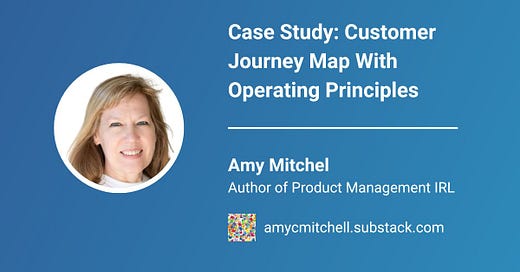




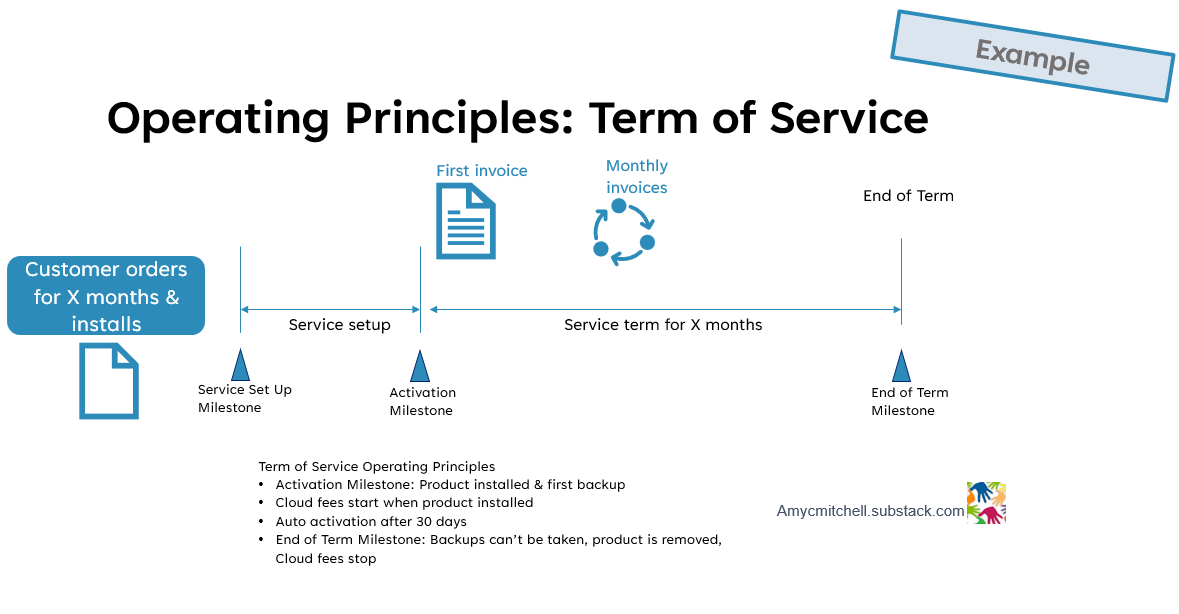
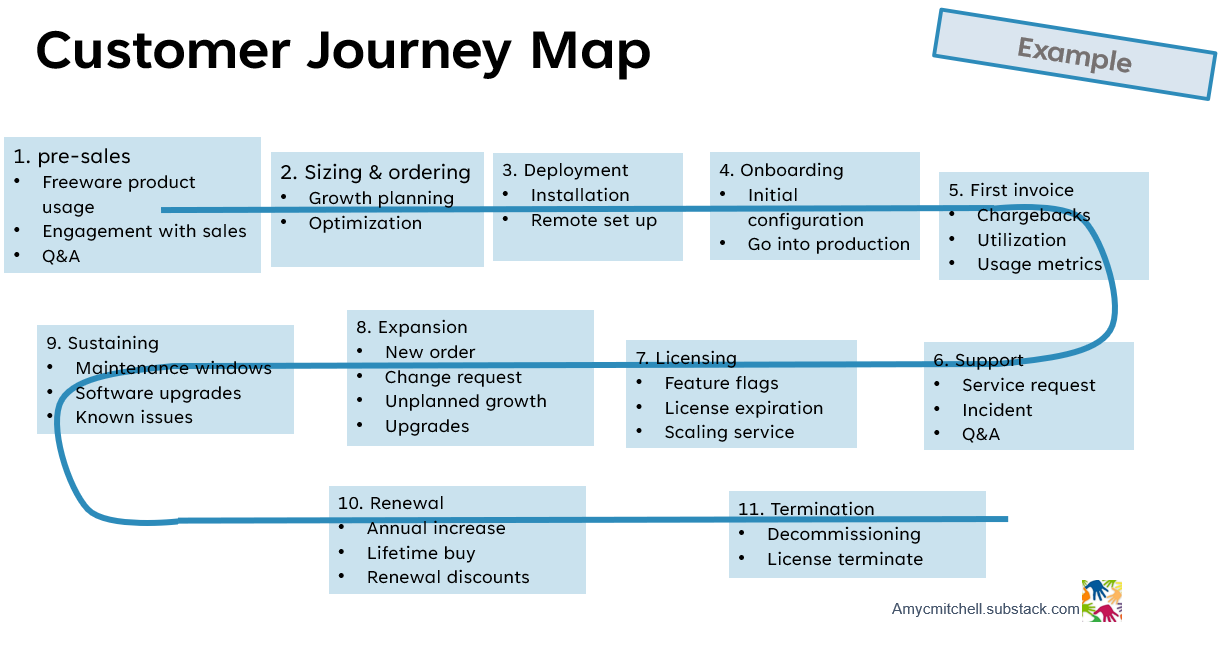
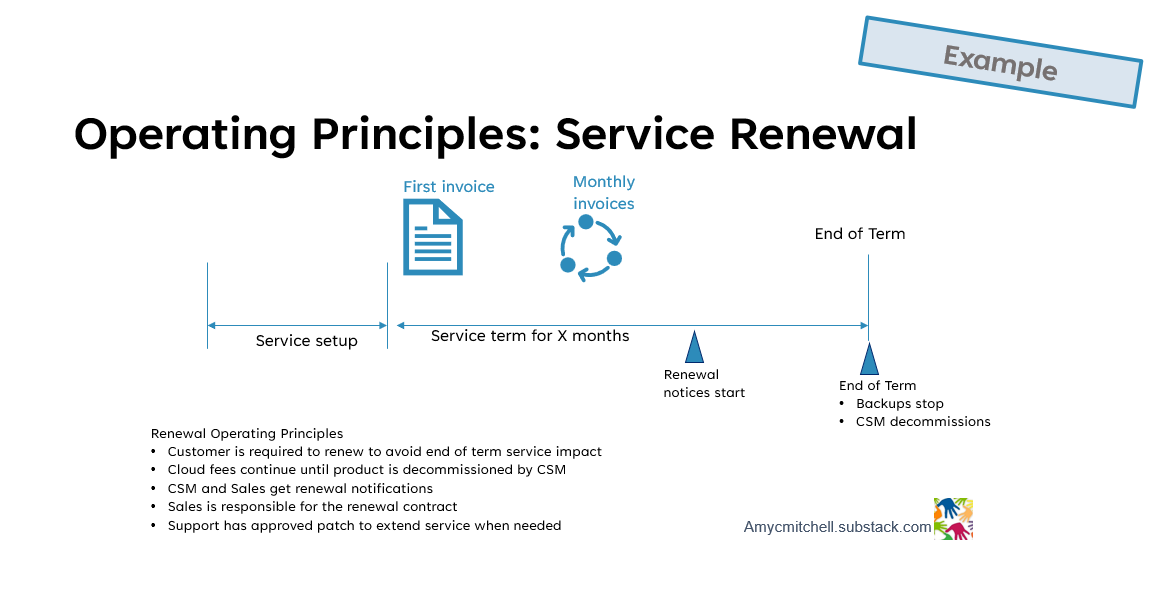
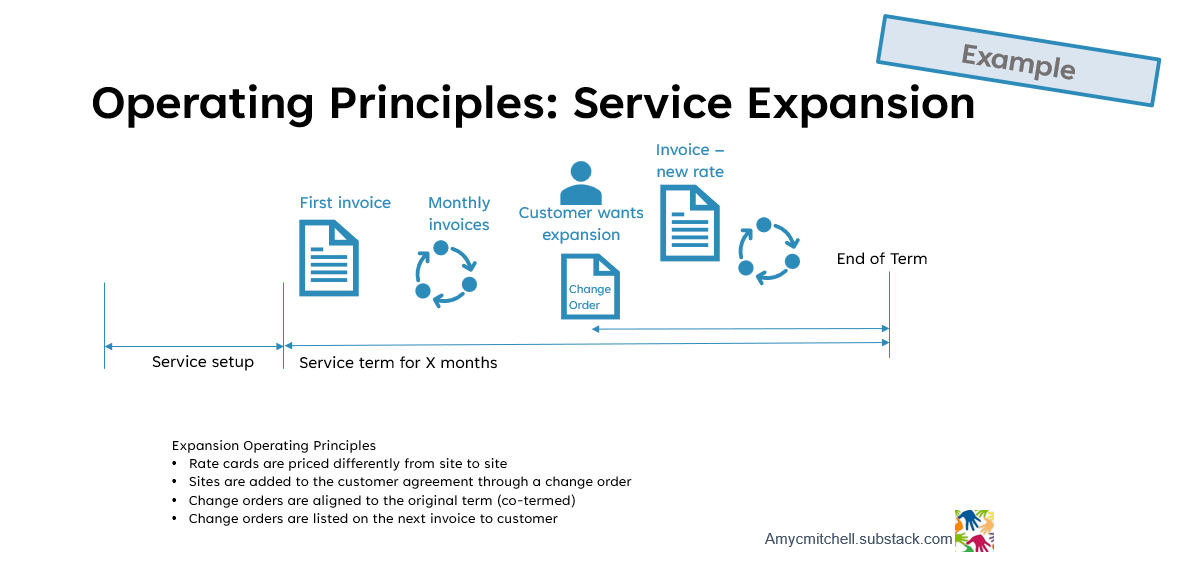
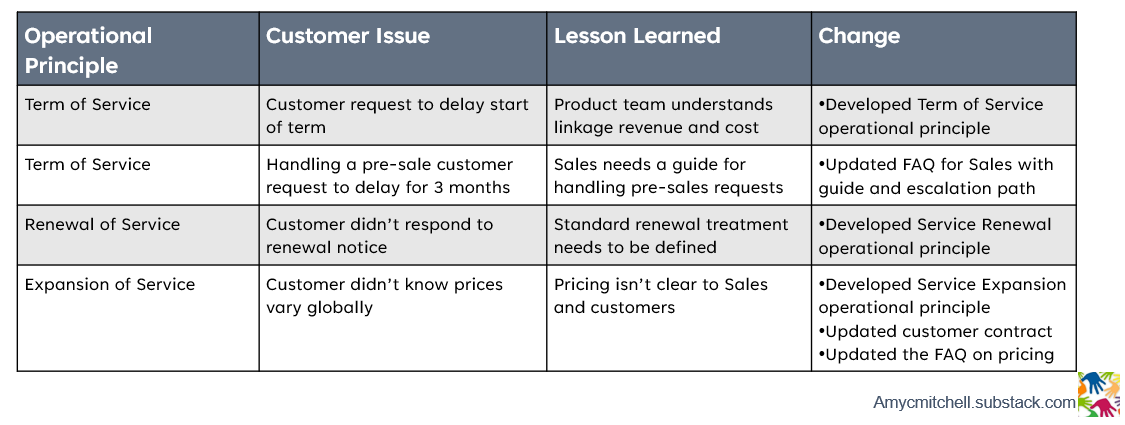
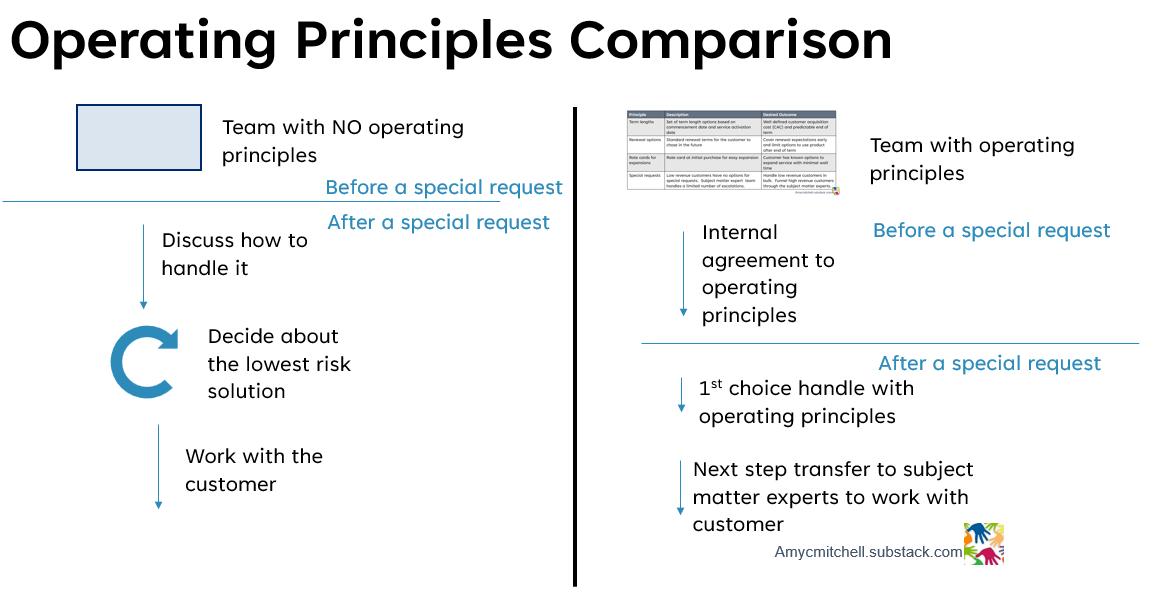


Thank you for the collaboration on this post! Your feedback and discussion on this article added key insights to using customer journey maps and operating principles in the real world.
I’d enjoy hearing feedback from your readers on this!
Great case study! This sounds like lots of service design principles not sure if you've explored that before? ☺️ One thing about customer journey maps to add, in my opinion, to be truly customer-centric in a map, it means focusing on a customer goal and including things that often diverge from the business' purchase and product journeys. Otherwise it's probably product-centric - which is fine but helps if that lens is recognised, as there might be other things going on in their journey that are important to understand.